Pits (pitting corrosion) in an iron pan? Is it possible to recreate “pitting corrosion”? We performed some cooking tests.
On September 14, 2016, a customer living in Aichi Prefecture and who uses a Kiwame Frying Pan called us with a question: “Numerous tiny pits have formed in the frying pan I’m using. Do I have a defective pan?” In order to determine the cause, we had her send us her frying pan, and it arrived at our company in September 18.
The condition of the frying pan we received
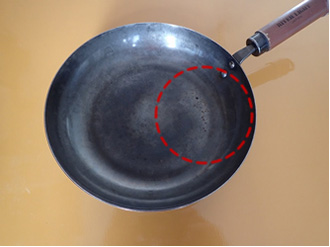
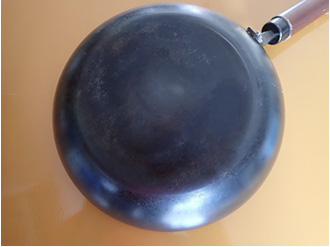
Overall, the frying pan we received was clean. However, numerous tiny pits had formed on its surface. In addition, for a frying pan that is supposed to be used with oil when cooking, there was almost no oil in its surface and it felt dry to the touch.
Magnification of the area where holes had formed
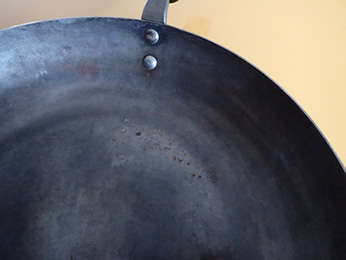
The customer said that the frying pan felt too difficult to use because food kept sticking to it when frying and stir-frying. In addition, the customer said that she sometimes cooked stewed dishes with lots of broth, but that she didn’t apply oil to the pan after cooking. It also became clear that she repeatedly left food in the pan for long periods of time after cooking it. This is why there was almost no oil in the pan when it arrived. As for why the customer contacted us, she said, “I bought the product because it had great reviews online, but food sticks and burns too much. Plus, tiny pits have formed. Do I just have a defective pan?”
Performing Cooking Tests
For the cooking tests, we used a brand-new frying pan, and we implemented the following care both before and after usage.
- Before using the pan for the first time, we “acclimatized it to oil” as explained in the user’s manual.
- We “acclimatized the pan to oil" each time prior to using it for cooking.
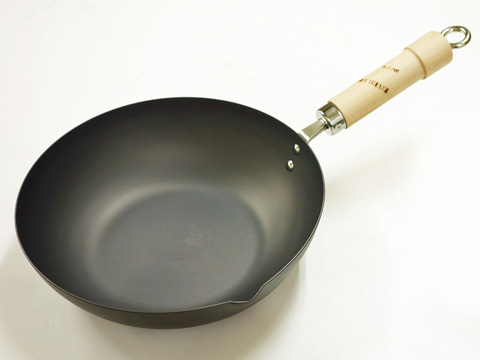
Brand-new 26cm frying pan
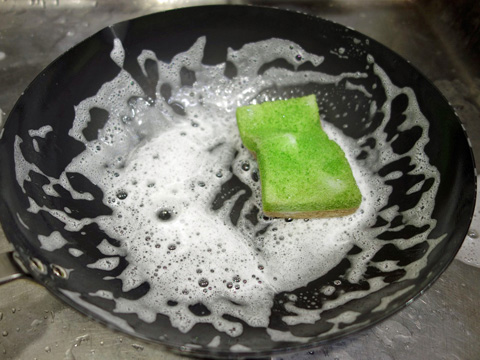
Washing with dish soap
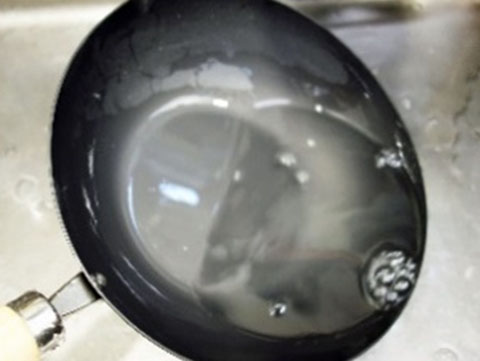
Rinsing
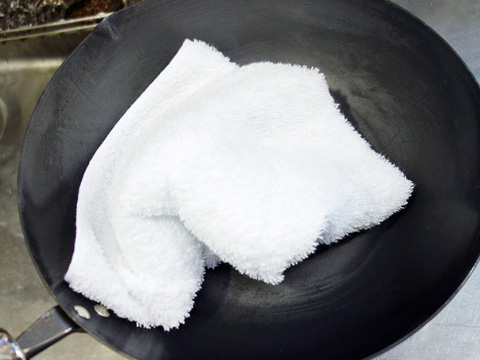
Wiping
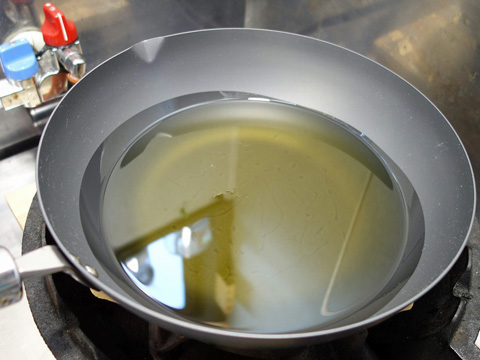
"Acclimatizing the pan to oil"
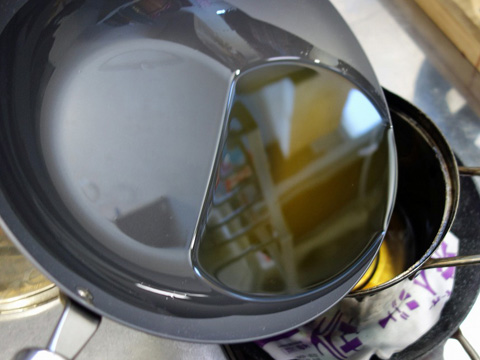
Returning the oil
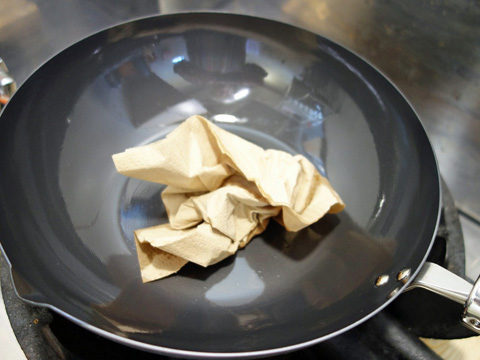
Wiping off the oil
- Normally, it is necessary to immediately transfer food onto a serving dish or into a storage container after cooking, but in this experiment, we leave completed dishes in the pan for a period of time.
*The duration that food was left in the pan differed each time, but it was basically anywhere from 30 minutes to 24 hours. - After leaving food in the pan for a set period of time, we remove the food, and wash and wipe the pan.
Cooking Test - December 6, 2016
For December, we simply took turns stir-frying cabbage and Chinese cabbage. For seasoning, we used standard amounts of salt and vinegar.
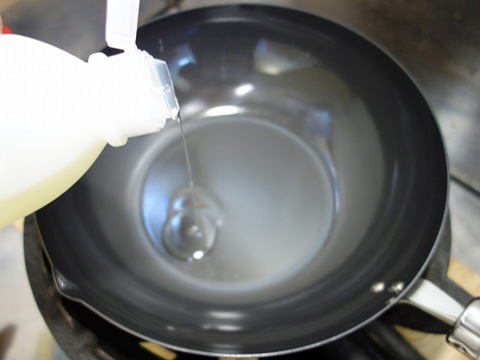
Pouring in an appropriate amount of cooking oil
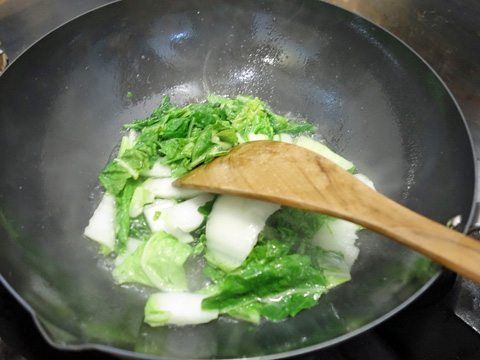
Stir-frying Chinese cabbage
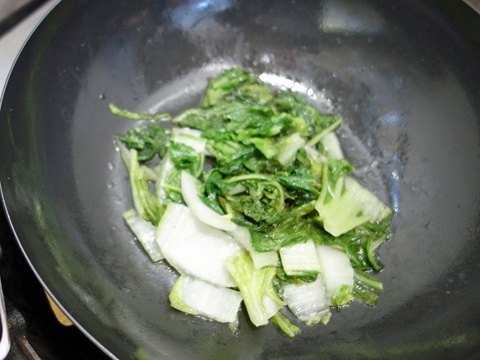
Leaving for approx. 30min
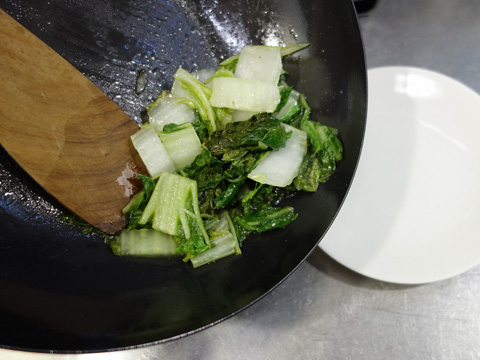
Transfering it onto a serving dish
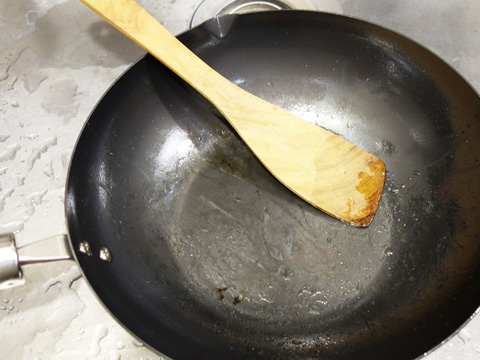
The pan after cooking
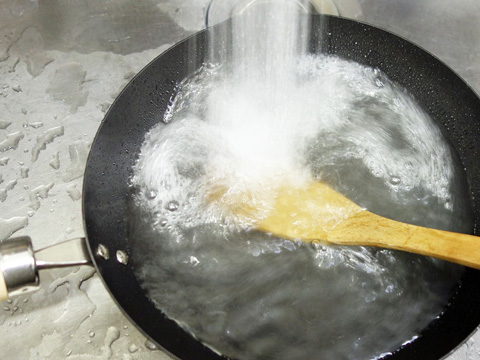
Washing using hot water from an electric kettle
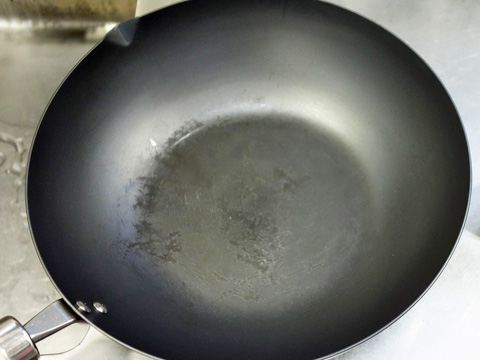
The pan after wiping off moisture
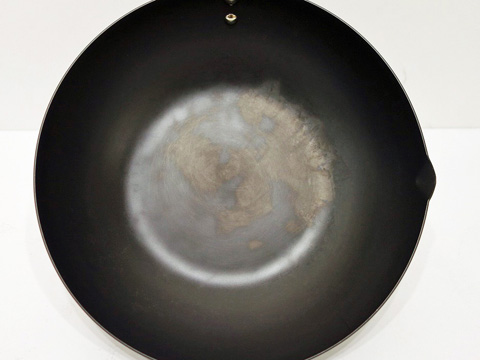
No abnormalities
Result: No abnormalities
Cooking Test - January 10, 2017
Roughly one month has passed since I began these tests, but still, no change whatsoever has occurred on the surface of the frying pan. Today (January 10, 2017), the company president said, “Next, it’s my turn,” and he brought out some curry that he had cooked at home the previous night.
Heating up curry using an iron pan
- He sets the frying pan I had been using in my test on top of the stove, and heats it up until the oil on its surface becomes runny. The heat is set to low.
- Once the oil is runny enough, he turns off the heat and wipes all of the oil off of the surface of the frying pan with a paper towel. →This is an important step because it removes oil that has oxidized due to contact with air.
- He sets the frying pan back on the stove and heats it up on medium heat.
- Once the frying pan is heated, he puts one ladle of cooking oil into the frying pan and heats it up to around 120~130℃. He lets the oil fully soak into the surface of the frying pan as he slowly rotates it. (→ the “oil acclimatization” process)
- Once he finishes this “oil acclimatization” process, he returns the oil to the oil pot.
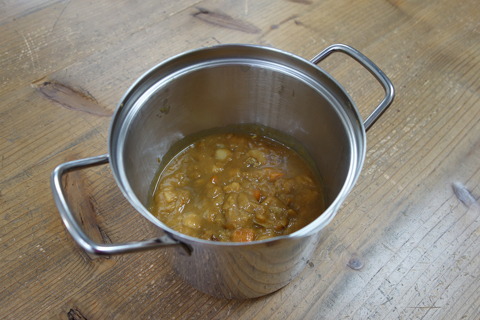
The curry brought from home
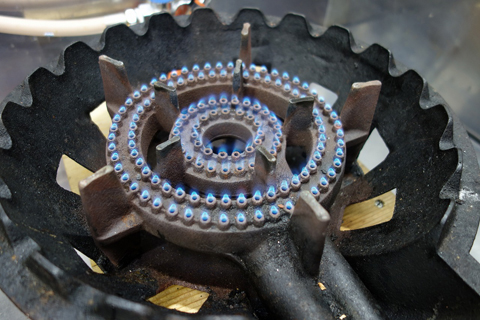
Turning on the heat and setting it to low
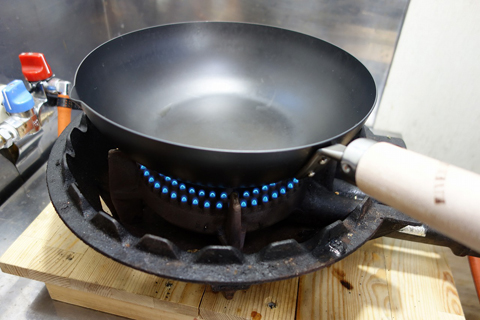
Heating up the pan on low heat
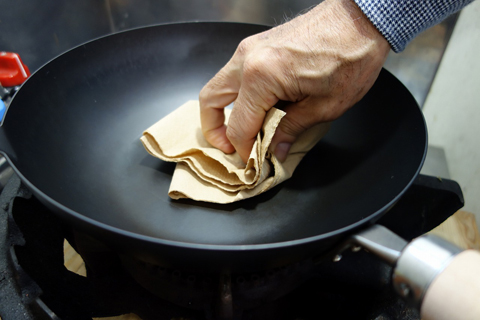
Wiping the surface of the pan dry
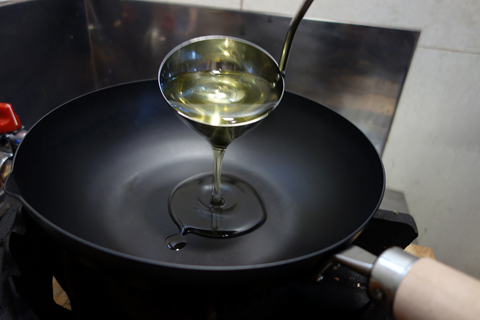
Pouring in a ladle of oil
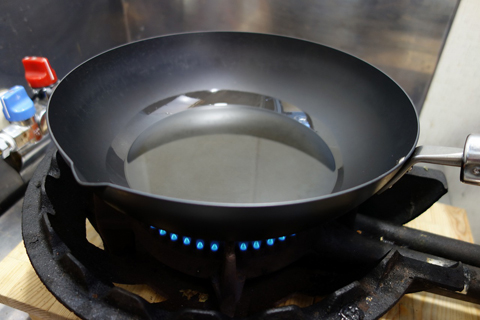
Conducting "oil acclimatization"
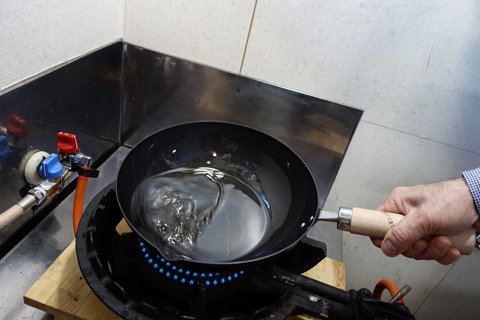
Spread the oil over the entire surface during the process
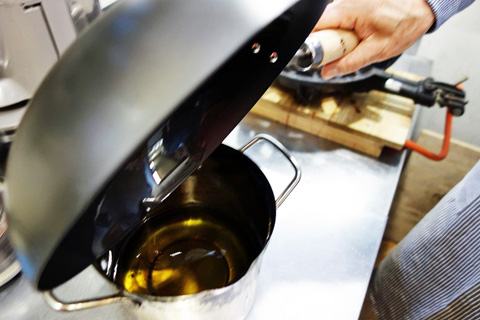
Returning the oil to the oil pot
- Finally, he puts the curry he had prepared the night before into the well-acclimatized frying pan and begins to slowly simmer it. It’s premade curry, so once it’s heated, it’s finished.
- He turns off the heat, places a lid on the frying pan and leaves it that way for several hours.
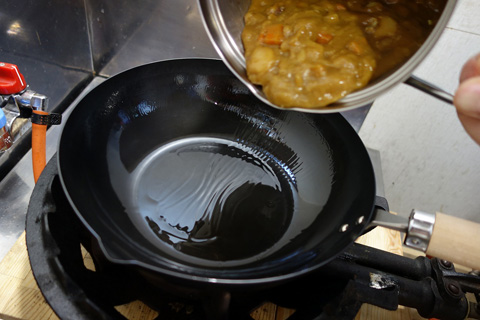
Placing curry in the pan
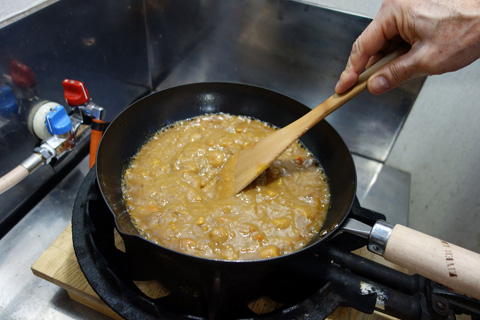
Heating it while stirring with a spatula to prevent burning
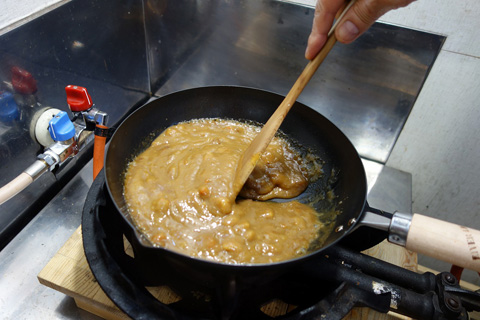
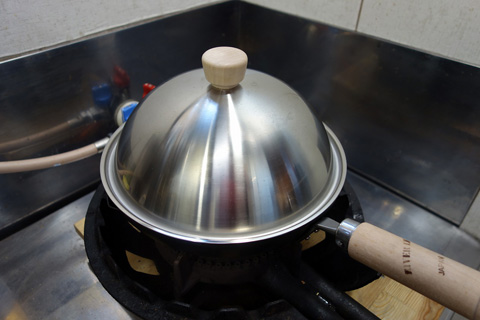
Turning off the heat and placing a lid on top once it's heated
- Five hours later, during the 3:00 p.m. break, he transfers the curry that had been left in the pan into a storage container.
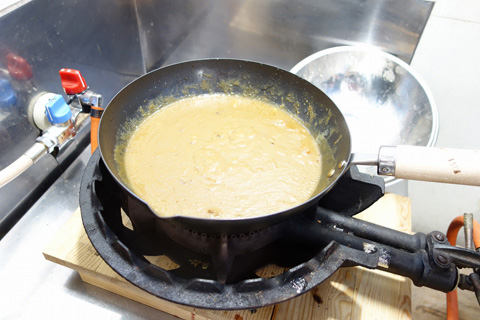
Taking the lid off of the pan
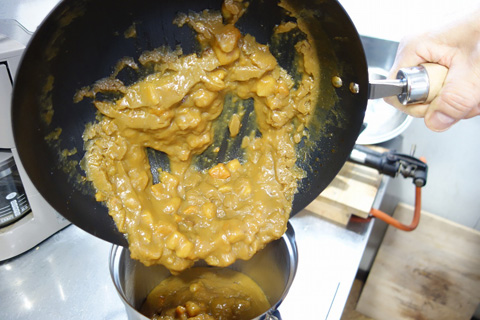
Transfering the curry into a storage container
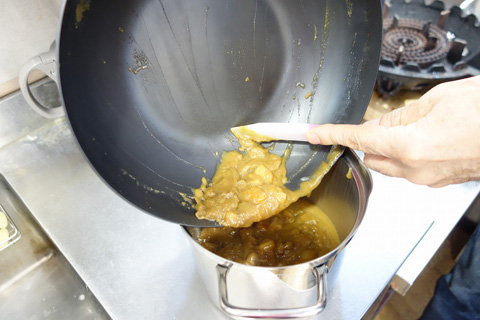
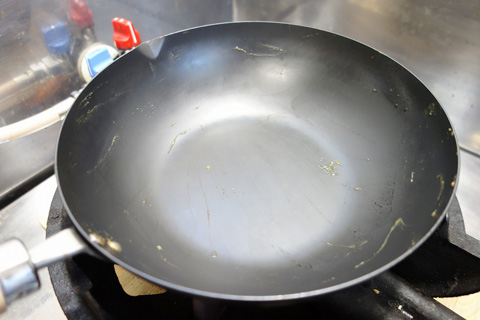
The now-empty pan
- He cleans the inside of the frying pan using hot water heated in an electric kettle.
- He wipes off the moisture and dries the pan on the stove. Then, he checks the surface of the frying pan. As expected, there is still no change whatsoever.
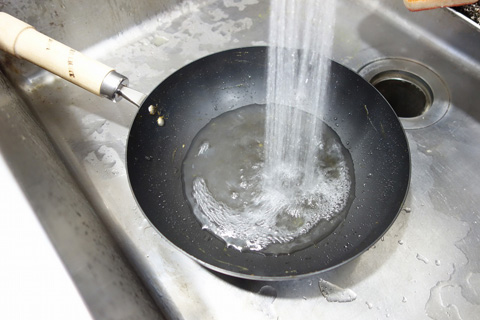
Washing using hot water from an electric kettle
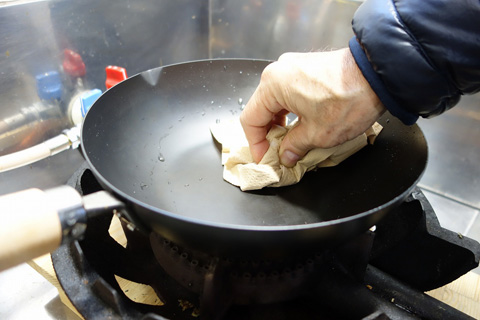
Wiping off water droplets
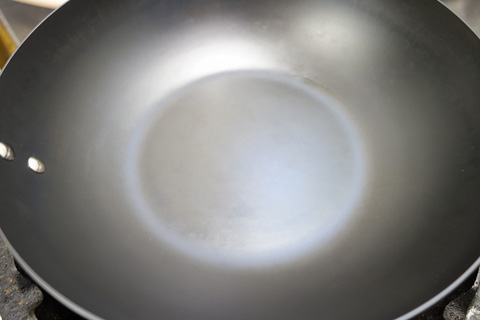
Inspection: No abnormalities whatsoever
- He rubs a thin layer of oil onto the surface of the frying pan, and then stores it away.
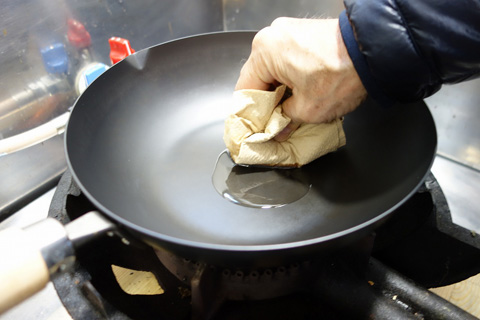
Wiping with a small amount of oil
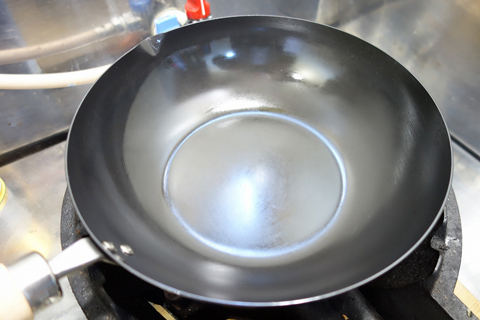
Oil-wiping completed
- Next time, I will perform a test using the same procedure.
Cooking Test - February 10, 2017
Once again, heating curry in an iron pan
As before, I decided to use the iron pan to heat up curry that I made at home. The photos are similar to the ones from the previous test, but because we are performing tests frequently, we continued to use curry as it conveniently produces leftovers.
- I oil the pan as usual, and after the pan is well-acclimatized, I wipe it and place the curry into the pan.
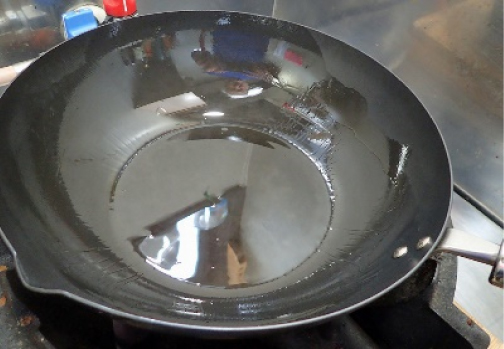
Conducting "oil acclimatization"
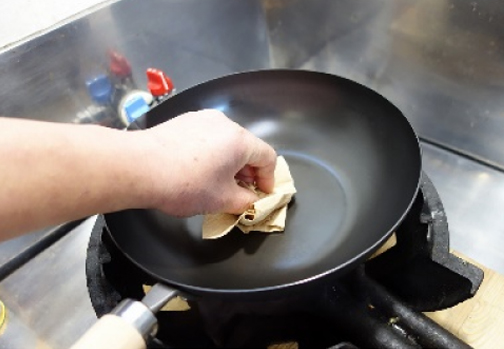
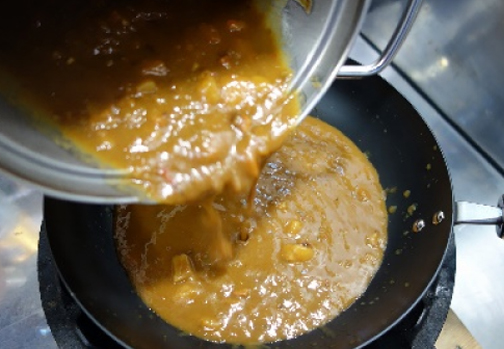
Heating the curry on low heat while stirring it to prevent burning
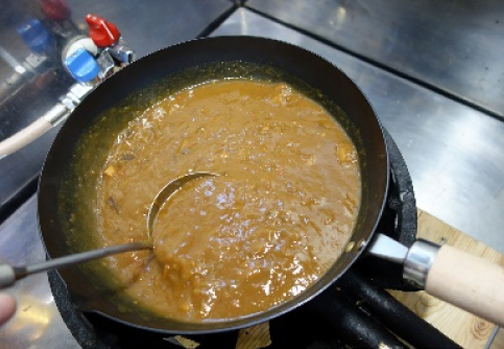
- I place a lid on the frying pan, and after leaving it that way from morning until evening, I transfer it into a storage container.
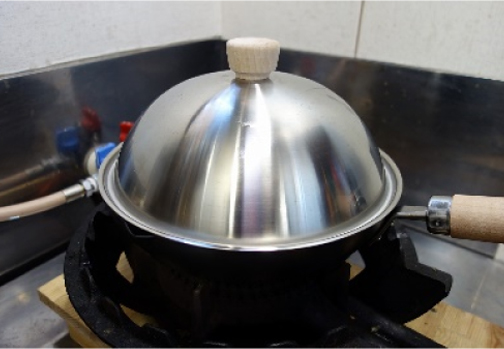
Turning off the heat and placing a lid on the pan
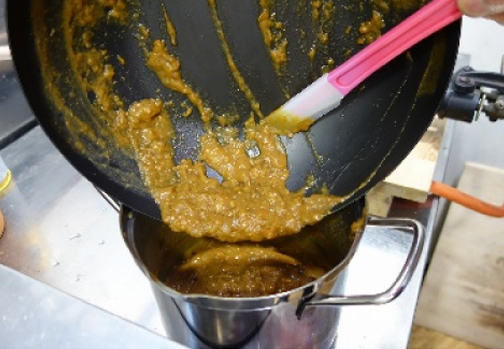
Transferring the curry into a storage container
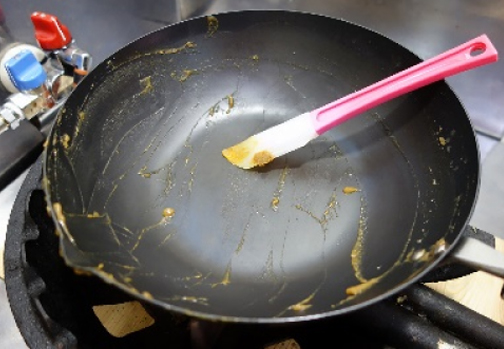
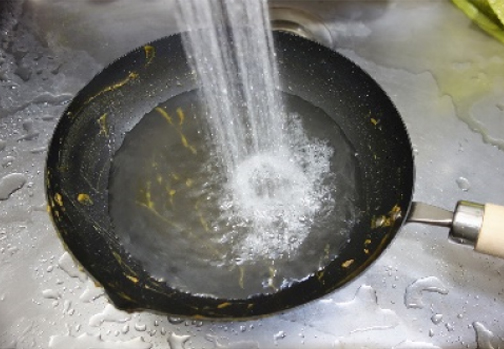
Washing the pan
- I clean the inside of the frying pan using hot water from an electric kettle.
- I wipe off the moisture and dry the pan on the stove. Then, I rub a thin layer of oil into the surface of the frying pan.
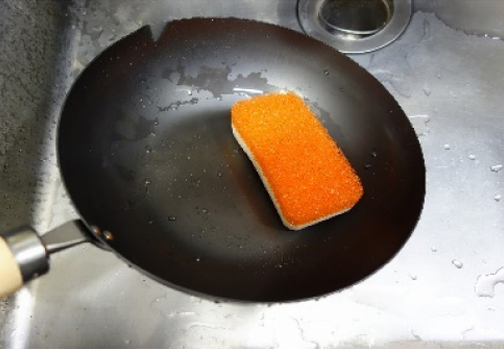
Washing using hot water from an electric kettle
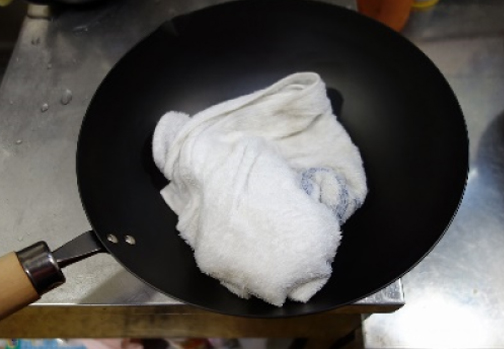
Wiping off water droplets
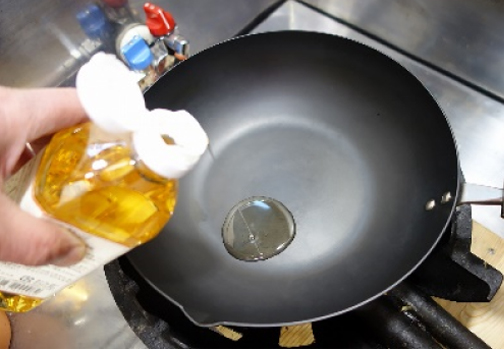
Drying by heating on the stove
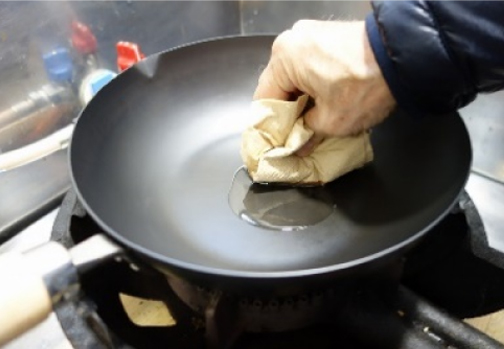
Rubbing in a small amount of oil
- I check the surface of the frying pan. There is no change whatsoever.
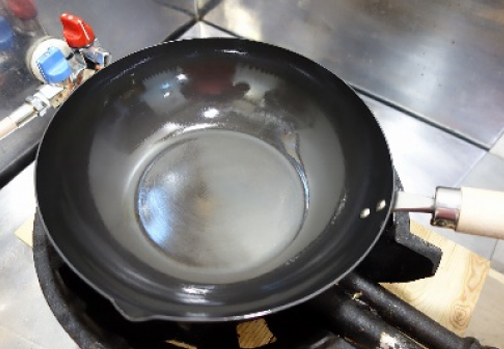
Oil-wiping completed
I love curry, but if I eat too much of it in a row, I get a bit tired of it. Next time, I want to conduct the test with a different dish.
Cooking Test - March 17, 2017
Making mapo tofu using the iron pan
The dish this time is mapo tofu utilizing instant sauce, so the cooking time will be short.
I decided to leave the food in the pan for nearly 20 hours, which is more severe than usual.
- I oil the pan as usual, and after the pan is well-acclimatized, I begin cooking.
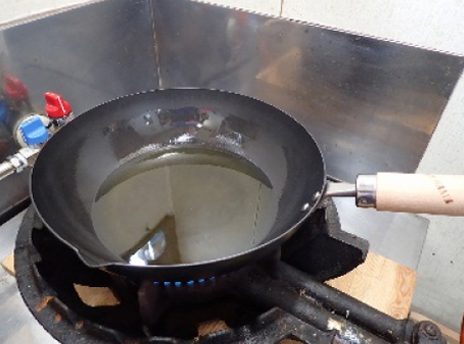
Conducting "oil acclimatization"
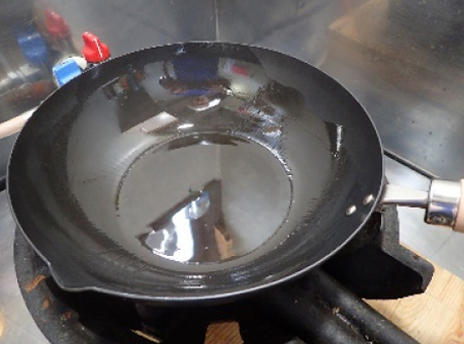
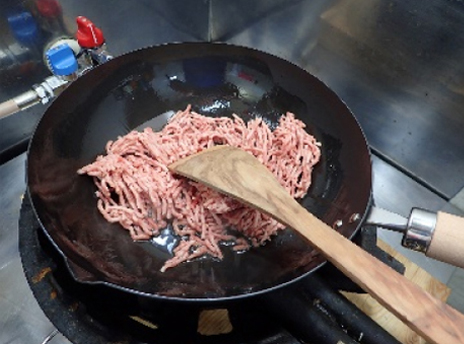
Stir-frying the minced meat
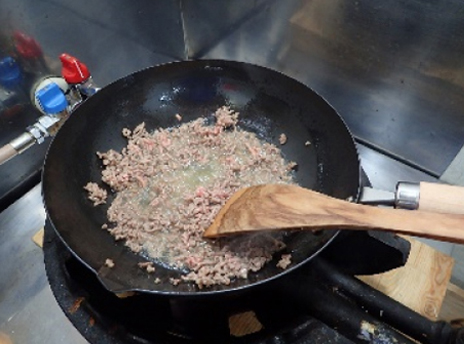
- I add in ingredients in order and efficiently prepare the dish.
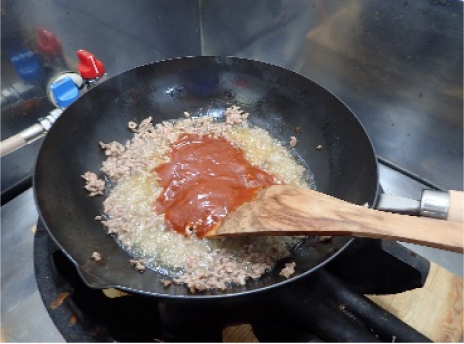
Adding seasonings
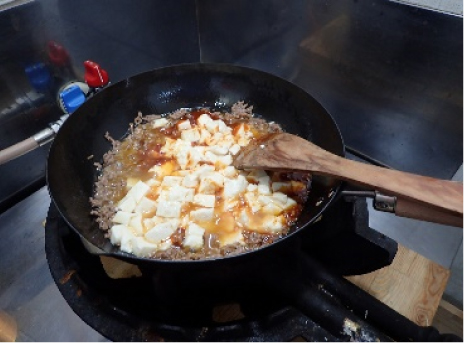
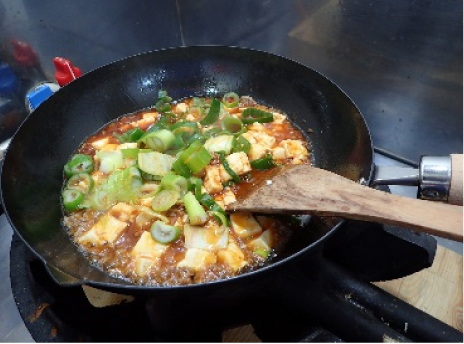
First adding in tofu and then onions
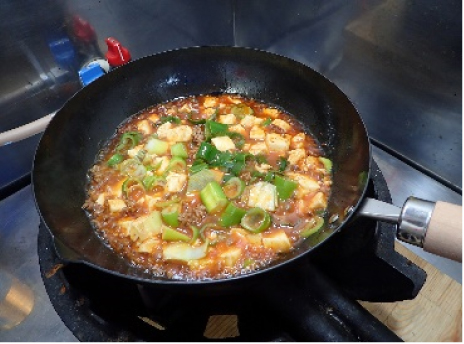
Finished
- Once it’s done, I place a lid on top and leave it like that until the beginning of the next week.
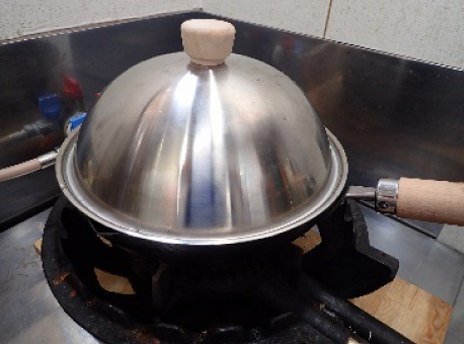
Placing a lid on top and leaving it that way
From Saturday afternoon until Monday morning
Leaving it as is
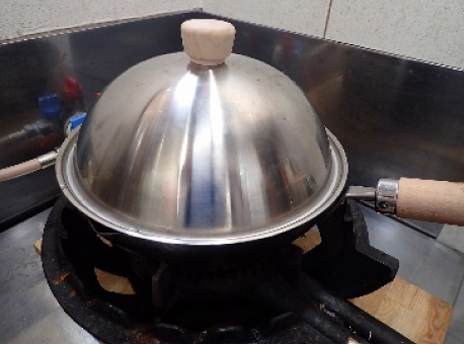
Approx. 20 hours later
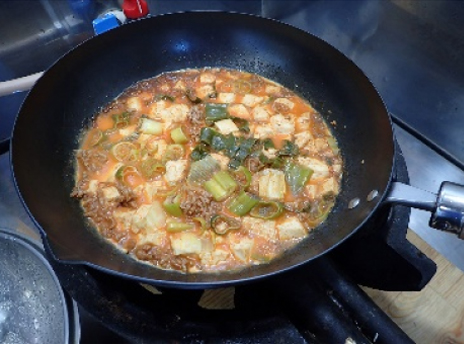
The condition after removing the lid
- After heating up the now-cold mapo-tofu, I transfer it onto a serving dish.
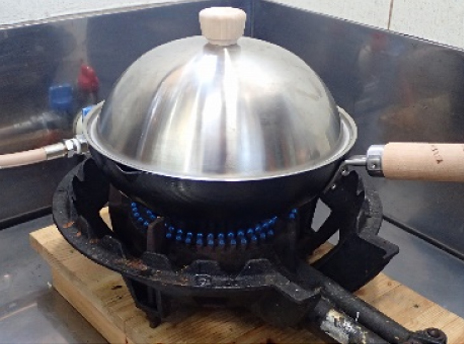
Placing a lid on top and re-heating it
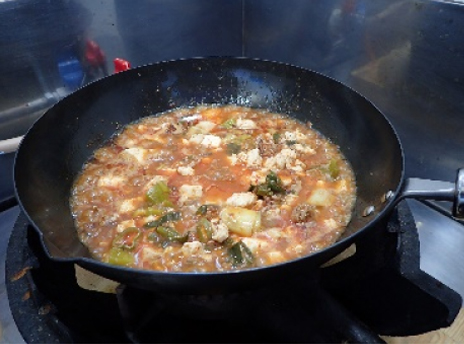
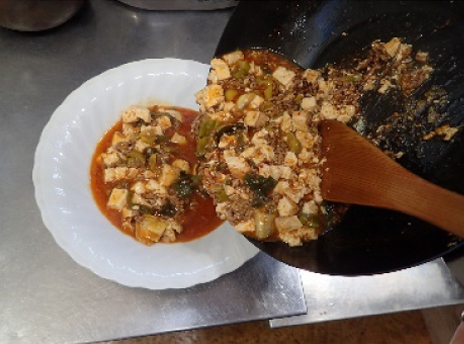
Transferring it to a serving dish once it’s fully heated
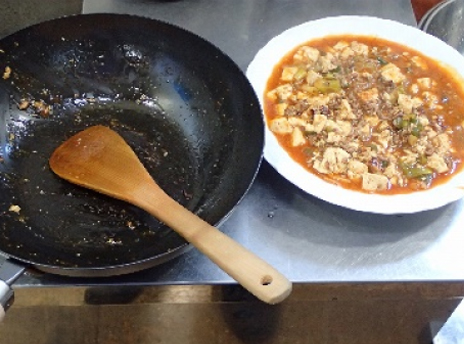
- Because the food had been left for 20 hours, I washed the pan more carefully than usual.
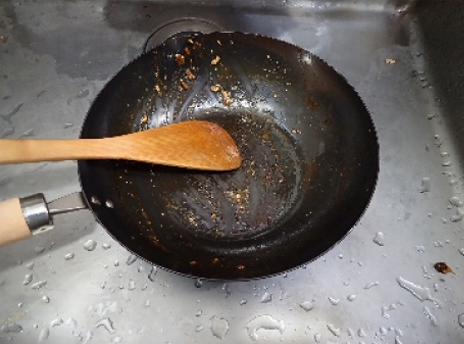
I wash it using hot water from an electric kettle, and then I also wash it with dish soap.
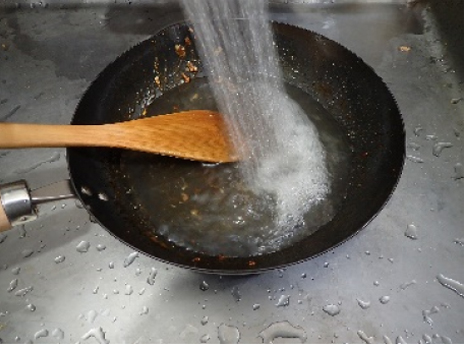
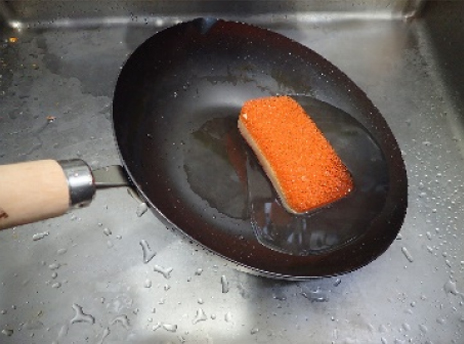
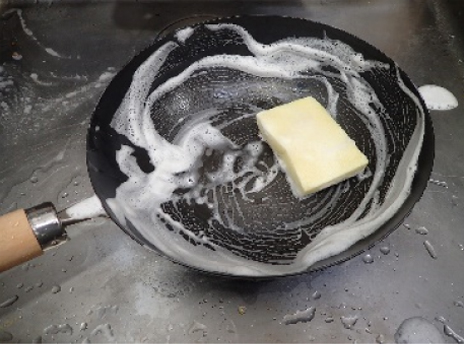
- After rinsing and drying it, I check the state of the pan once.
There are absolutely no abnormalities in the pan this time either.
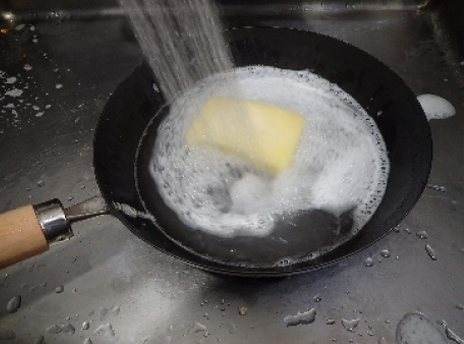
The condition after fully rinsing it
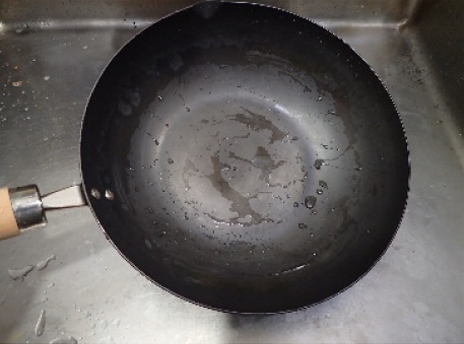
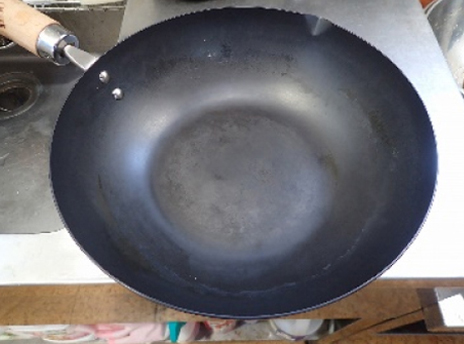
Inspecting the inside of the pan after drying it by heating it on the stove (No abnormalities)
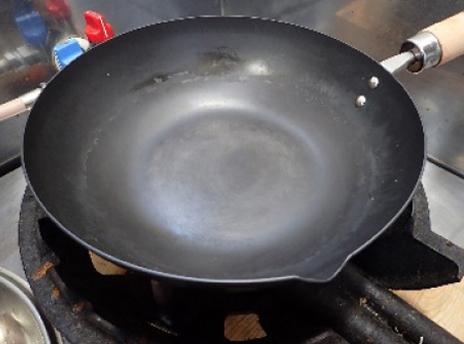
- In preparation for next time, I "acclimatize the pan to oil" more carefully than usual and using plenty of oil.
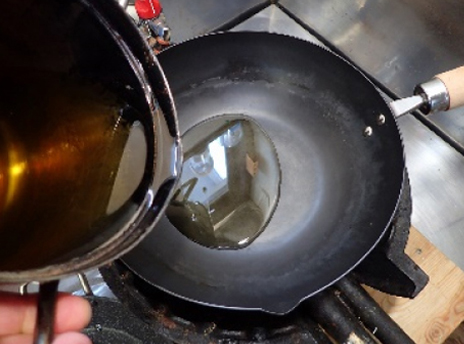
"Acclimatizing the pan to oil" by pouring in plenty of oil
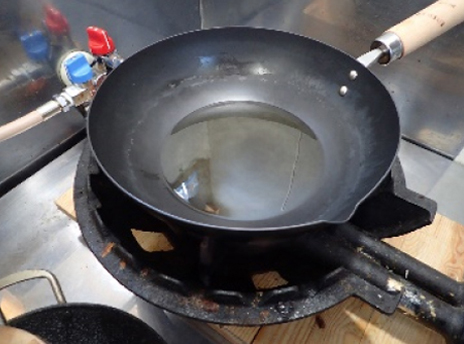
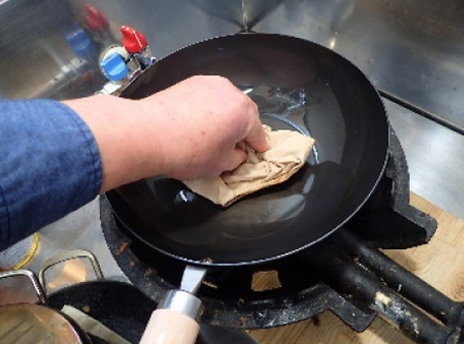
Rubbing the surface of the pan after returning the oil
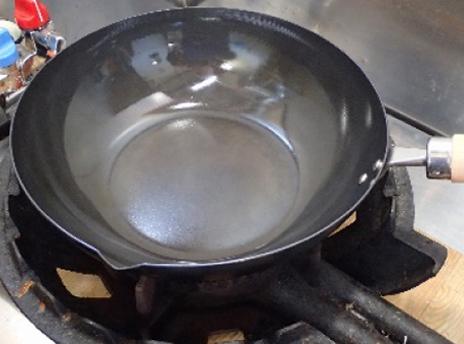
Result: No abnormalities
Although no photographs were taken, following this, I also used the pan to fry up cooked rice in packed lunch for making fried rice, stir-fry vegetables, cook soup and so on. It's getting a bit warmer outside, and it’s finally beginning to feel like spring. We're currently trying to decide what to make next.
Cooking Test - July 20, 2017
Cooking Test: Making ratatouille in the iron pan
For the next test, I decided to cook ratatouille using summer vegetables. Ratatouille, a local specialty from the city of Nice and a region called Provence in southern France, is a summer vegetable stew. It is a popular dish in Japanese households as well. Since it is a stewed dish made using sour tomatoes, people normally transfer it onto a separate serving dish as soon as it is finished cooking.
For this test, I made ratatouille at around 7:00 p.m., placed a lid on it and left it in the pan like that for roughly 16 hours, until around 11:00 a.m. the next day. When I reheated it and had it for lunch, I could sense that a bit of the smell of the iron pan had migrated to the food.
This reaffirmed that, in order to enjoy food at its most delicious, it’s better to immediately transfer it into another container when it’s finished cooking.
- I oil the pan as usual, and after the pan is well-acclimatized, I begin cooking.
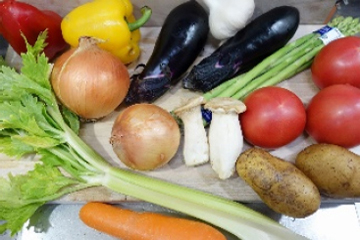
Ingredients
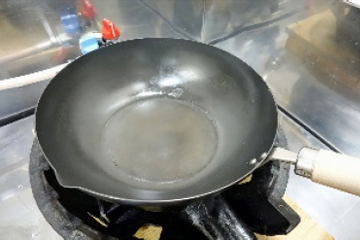
Heating the pan
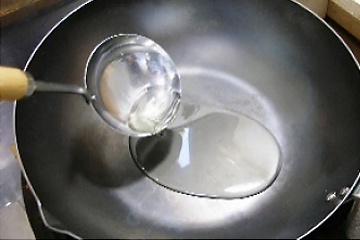
Pouring oil into the pan
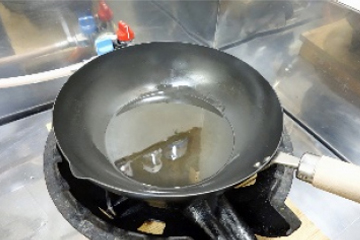
- Before stir-frying a large amount of vegetables, please thoroughly "acclimatize the pan to oil."
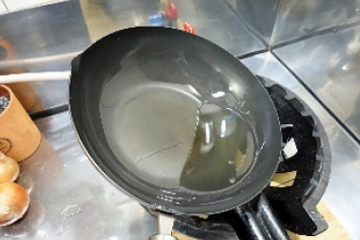
Rotating oil around the entire pan
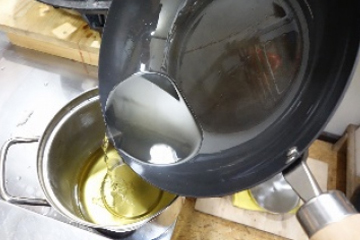
Returning the oil
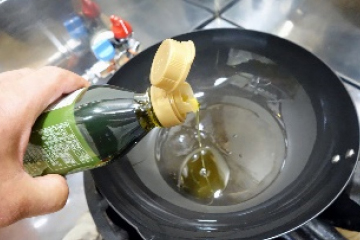
Pouring in olive oil
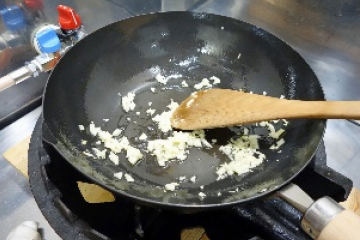
Stir-frying garlic
- Once it’s finished, I place a lid on top and leave it until the next morning.
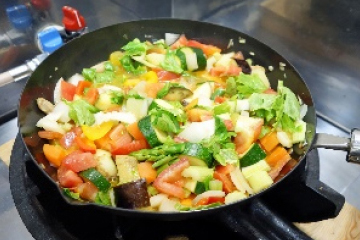
Adding in and frying vegetables
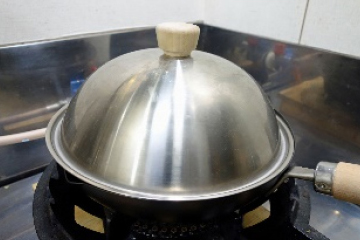
Simmering under a lid
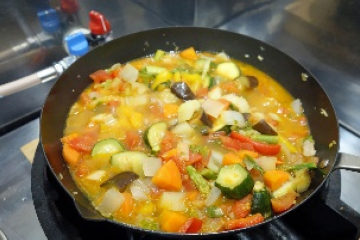
It’s done
Placing a lid on top
Storing from 7:00 p.m. until 11:00 a.m. the next day
Approx. 16 hours later
- After reheating, I remove the food and wash the pan.
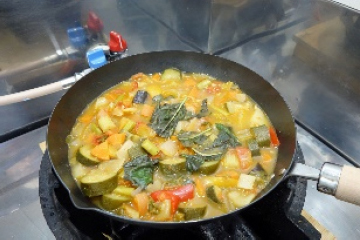
Finished after reheating
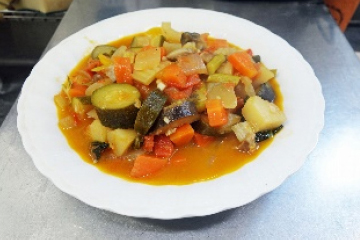
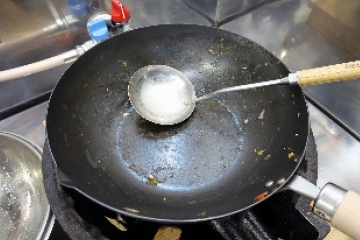
Washing the pan
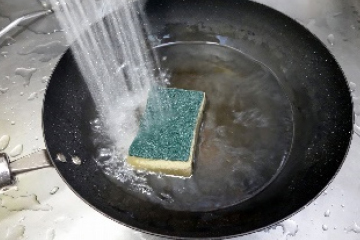
- After rinsing and wiping the pan, I dry it by heating it at medium heat.
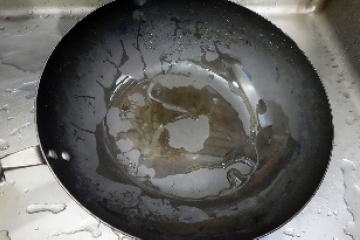
Wiping the pan once it is fully rinsed
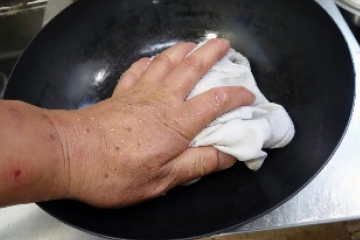
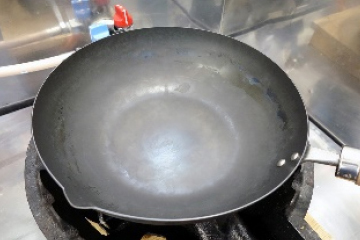
The condition after drying the pan by heating it on the stove for a short time
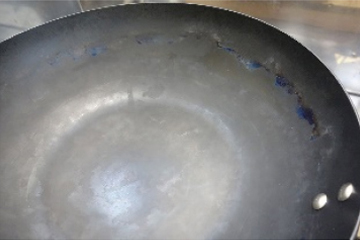
There are absolutely no abnormalities in the pan this time either.
- In preparation for next time, I "acclimatize the pan to oil."
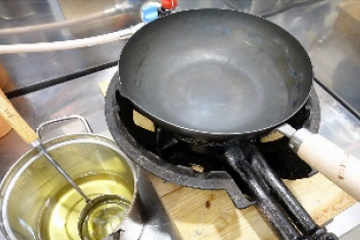
Heating the pan at medium heat and adding in a ladle of oil
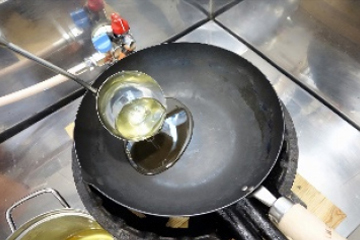
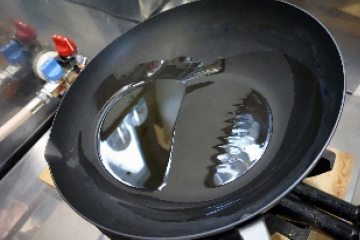
Rotating the oil around the entire pan and returning it to the oil pot
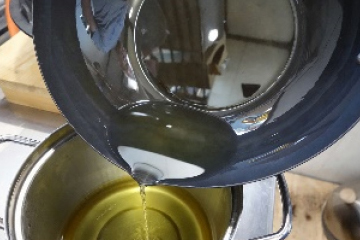
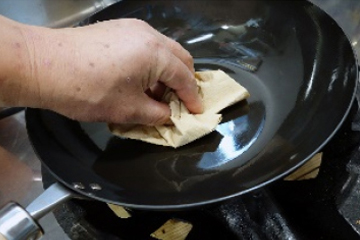
Wiping the entire pan using paper towels, etc.
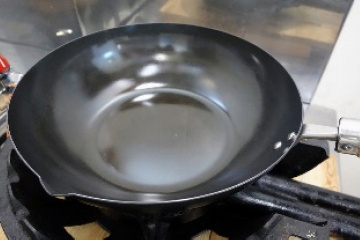
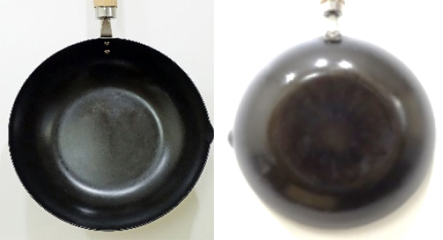
The pan after completion of care
Result: No abnormalities
The cooking tests, which we began last December to test for pitting corrosion, went on for roughly seven months. Naturally, we performed the tests using the same, single frying pan the entire time. Sometimes, we would take it home and use to cook there, and we continued to use it at the company to cook dishes for lunch and to take illustrative photographs.
However, we were completely unable to recreate the pitting phenomenon that has been point out to us through the cooking we did and the care we implemented. As is standard, we "acclimatized the pan to oil" before cooking and implemented post-cooking care (conducing "oil-acclimatization" after cooking stewed dishes). I am sure that you can see in the images how we used the pan. Even though we intentionally and repeatedly left food in the pan, which is improper usage, no pitting occurred whatsoever. I wonder, how in the world do you have to use a Kiwame Frying Pan for pits to open up?
All materials possess their own unique characteristics.
When people understand a material’s characteristics and comply with usage methods that make the most of that material’s positive aspects, it will unfailingly lead to positive results. As you can see in the photographs taken over the course of the tests, pitting corrosion does not occur if pre-cooking and post-cooking procedures are properly conducted. When using the Kiwame Frying Pan series, we ask that you first fully understand the characteristics of the materials.
Also, striking the iron nitride layer over the surface of these Kiwame Frying Pans with a hard object (such as a ladle) will cause cracks. If salt, vinegar and other substances seep into these cracks, it will cause pitting corrosion, so please be very careful not to strike the pans with hard objects when using them.
When using the Kiwame Frying Pan series, we ask that you first fully understand the characteristics of the materials.
*Please think of the nitride layer over the surface of Kiwame series frying pans as being the same hardness as a rice cracker. Striking it with a hard object (such as a ladle) can cause damage (cracks, etc.). If salt, vinegar and other substances seep into these damaged areas (cracks, etc.), the iron sheet will corrode, and craters will form in the surface of the frying pan. Therefore, we ask that you be very careful not to strike the surface of the frying pans with hard objects.
Frying Pan Pitting Corrosion and Prevention Measures - Nippon Steel Trading Technical Support Office

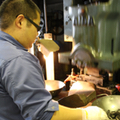
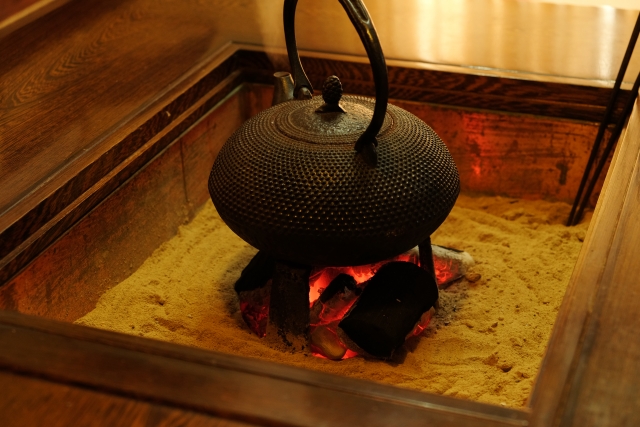
 KIWAME PREMIUM
KIWAME PREMIUM